Abstract
A practical intervention program, targeting the safety belt use of pizza deliverers at two stores, increased significantly the use of both safety belts (143% above baseline) and turn signals (25% above baseline). Control subjects (i.e., pizza deliverers at a third no-intervention store and patrons driving to the pizza stores) showed no changes in belt or turn signal use over the course of 7-month study. The intervention program was staggered across two pizza stores and consisted of a group meeting wherein employees discussed the value of safety belts, received feedback regarding their low safety belt use, offered suggestions for increasing their belt use, and made a personal commitment to buckle up by signing buckle-up promise cards. Subsequently, employee-designed buckle-up reminder signs were placed in the pizza stores. By linking license plate numbers to individual driving records, we examined certain aspects of driving history as moderators of pre- and postintervention belt use. Although baseline belt use was significantly lower for drivers with one or more driving demerits or accidents in the previous 5 years, after the intervention these risk groups increased their belt use significantly and at the same rate as drivers with no demerits or accidents. Whereas baseline belt use was similar for younger (under 25) and older (25 or older) drivers, younger drivers were markedly more influenced by the intervention than were older drivers. Individual variation in belt use during baseline, intervention, and follow-up phases indicated that some drivers require more effective and costly intervention programs to motivate their safe driving practices.
Keywords: safety belt use, response generalization, driving history, multiple baseline design, corporate safety
Full text
PDF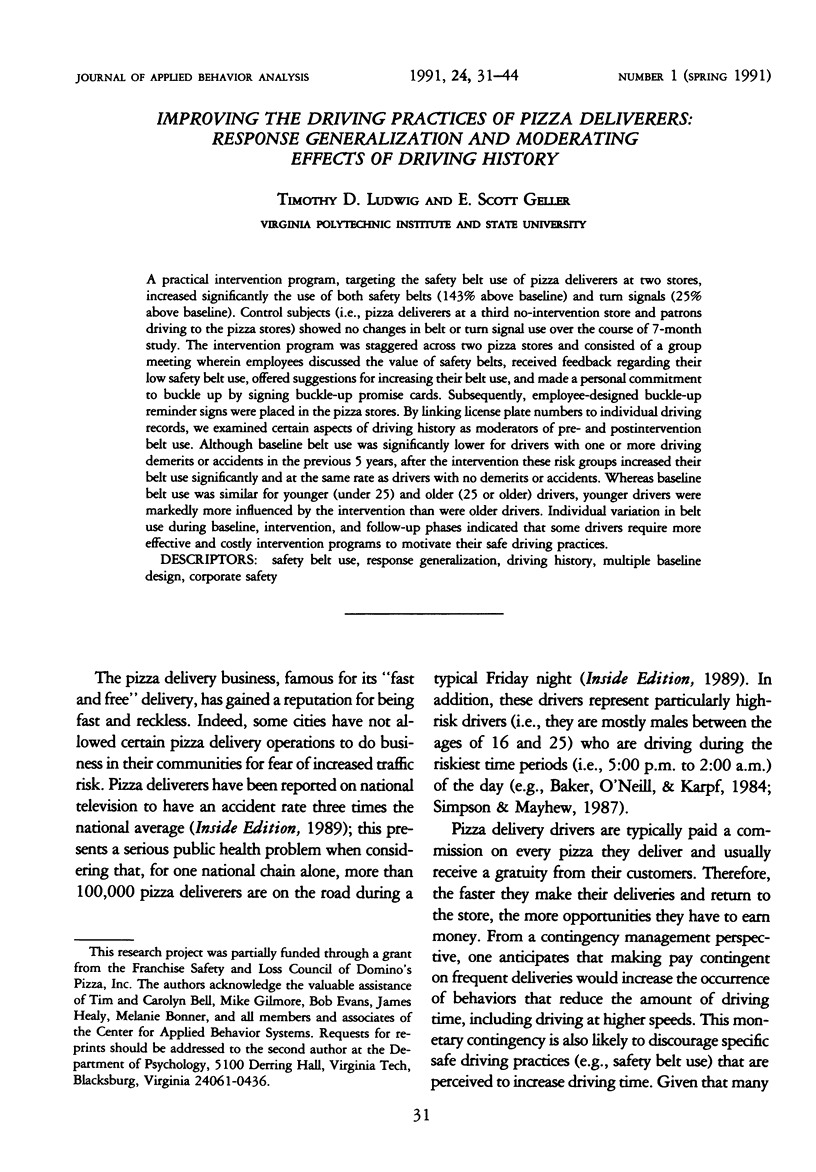
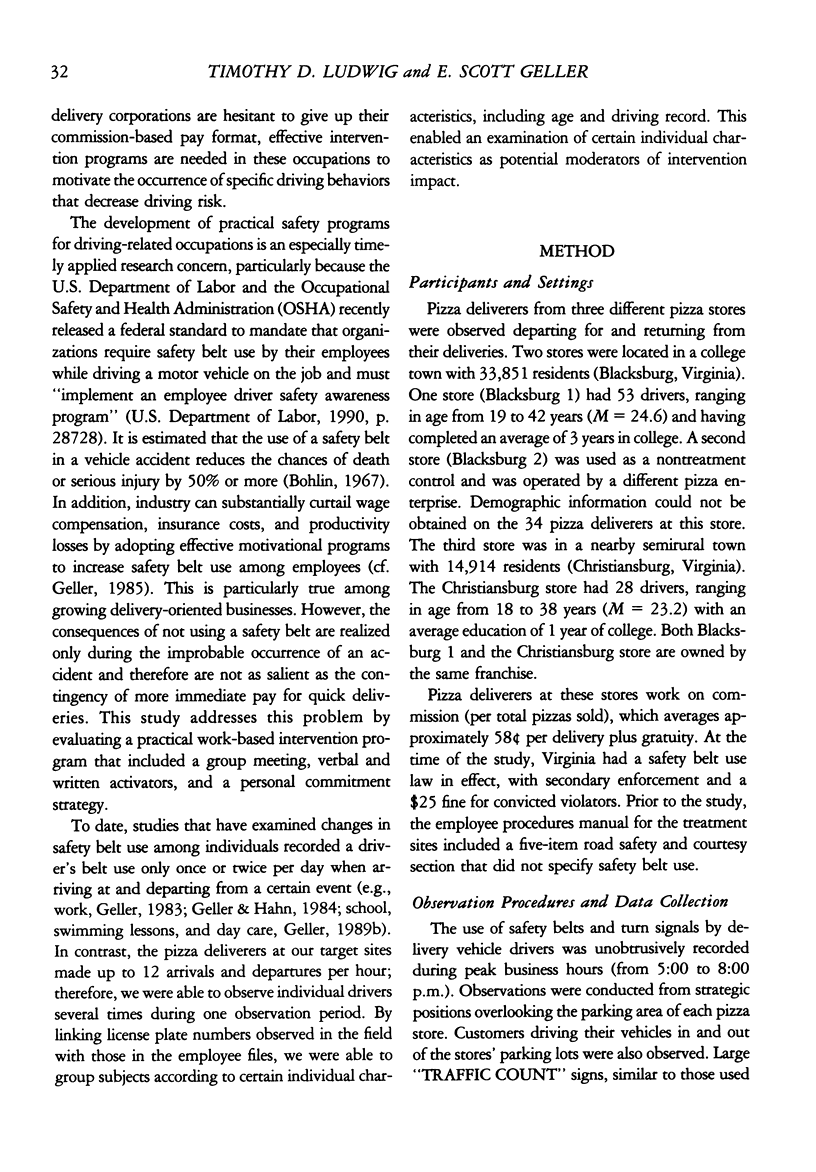
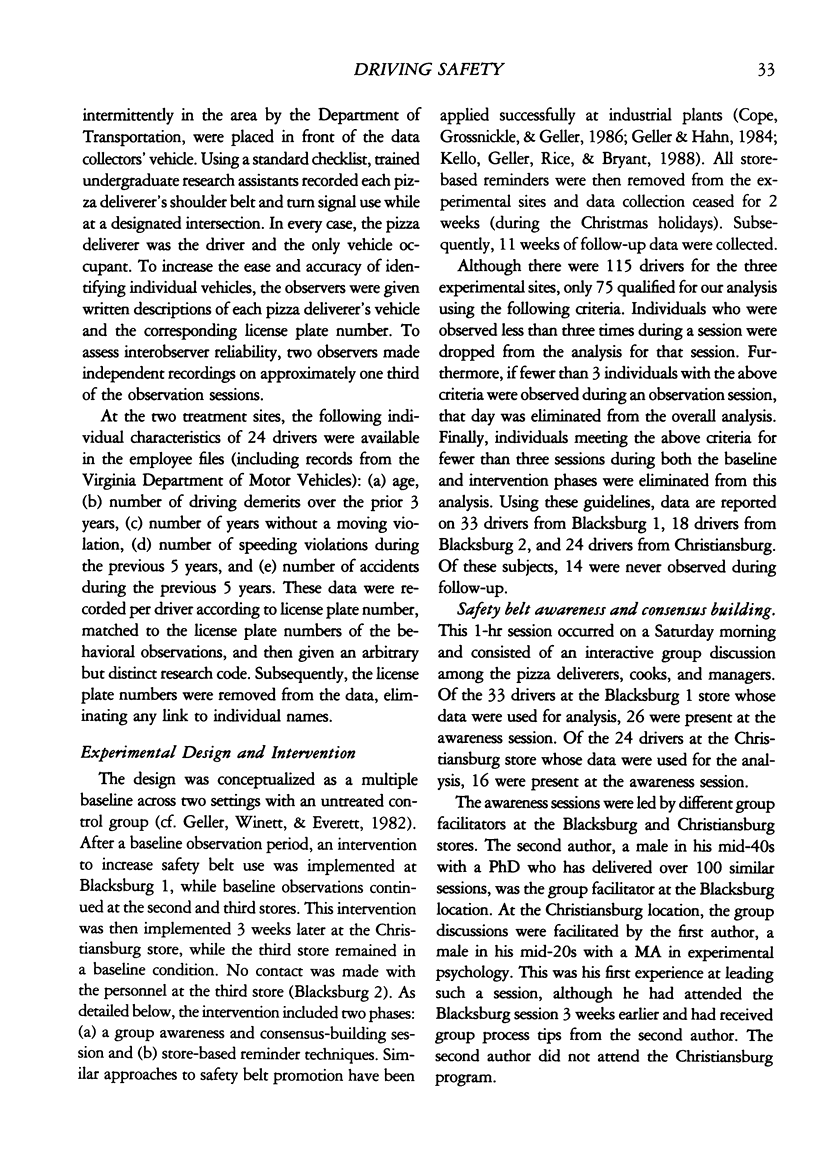
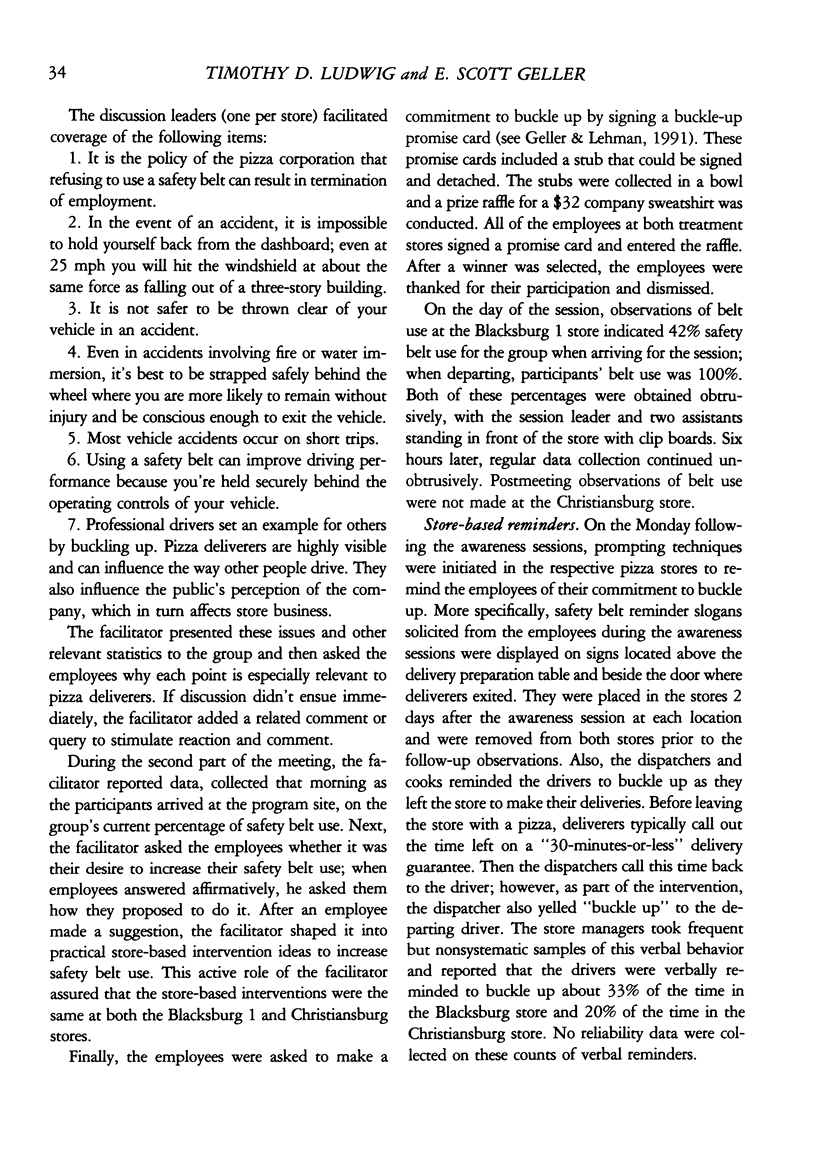
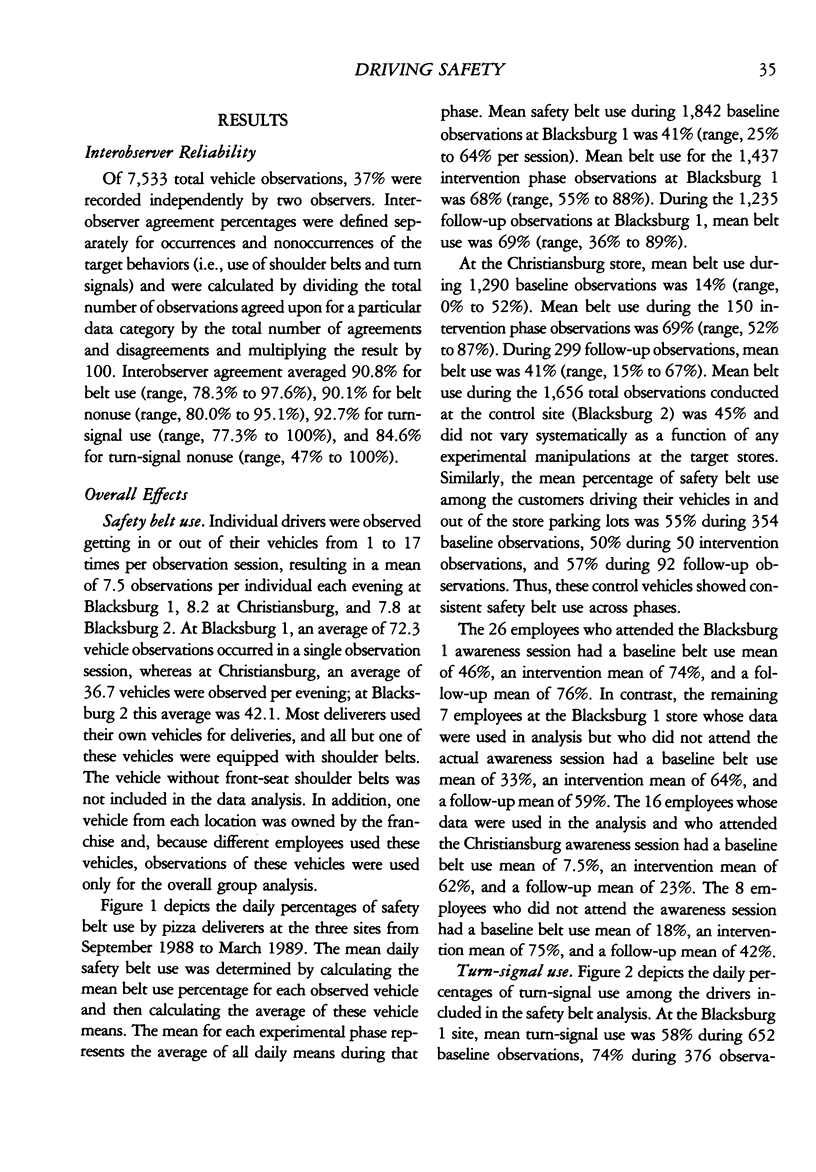
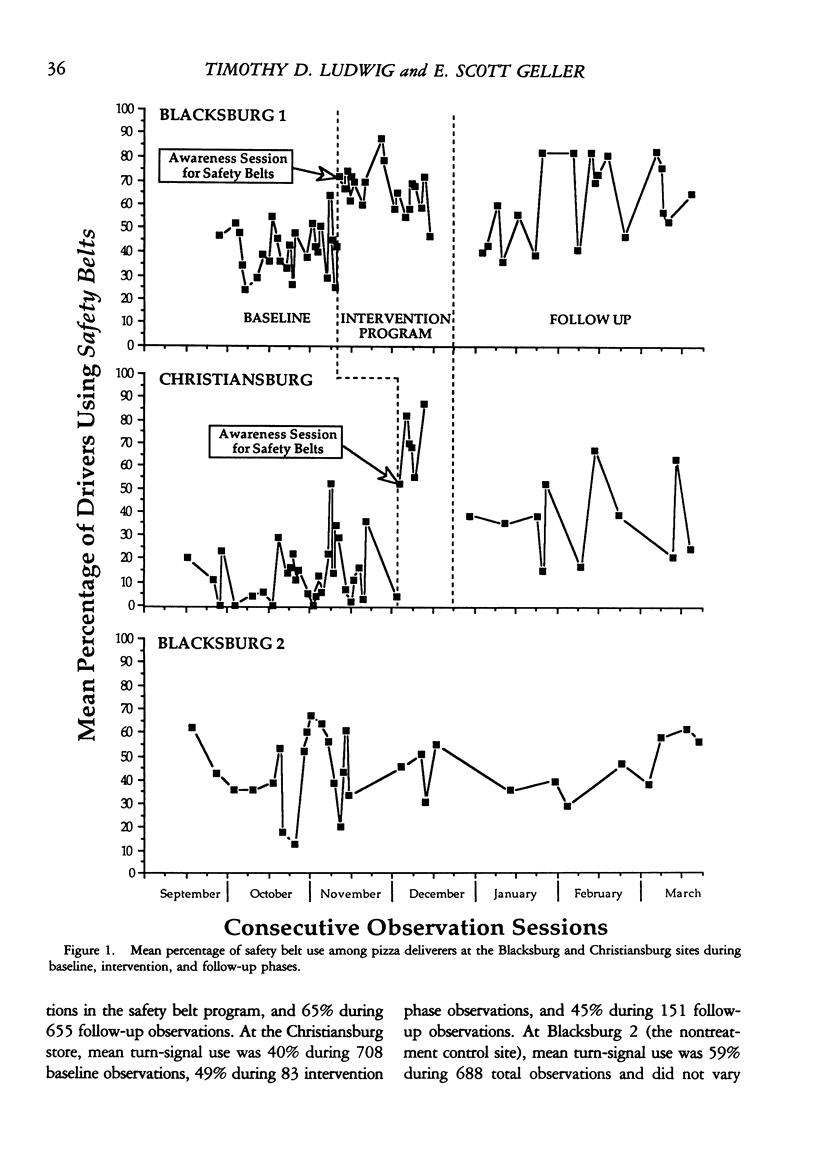
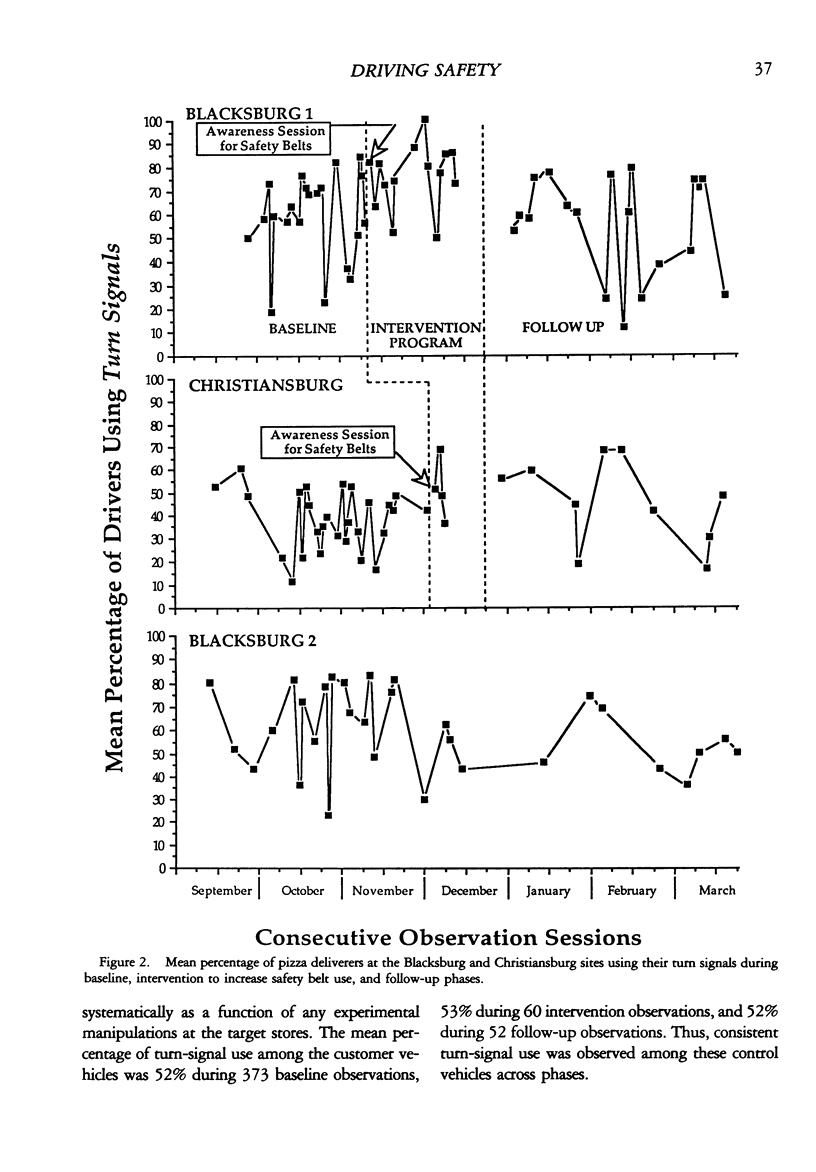
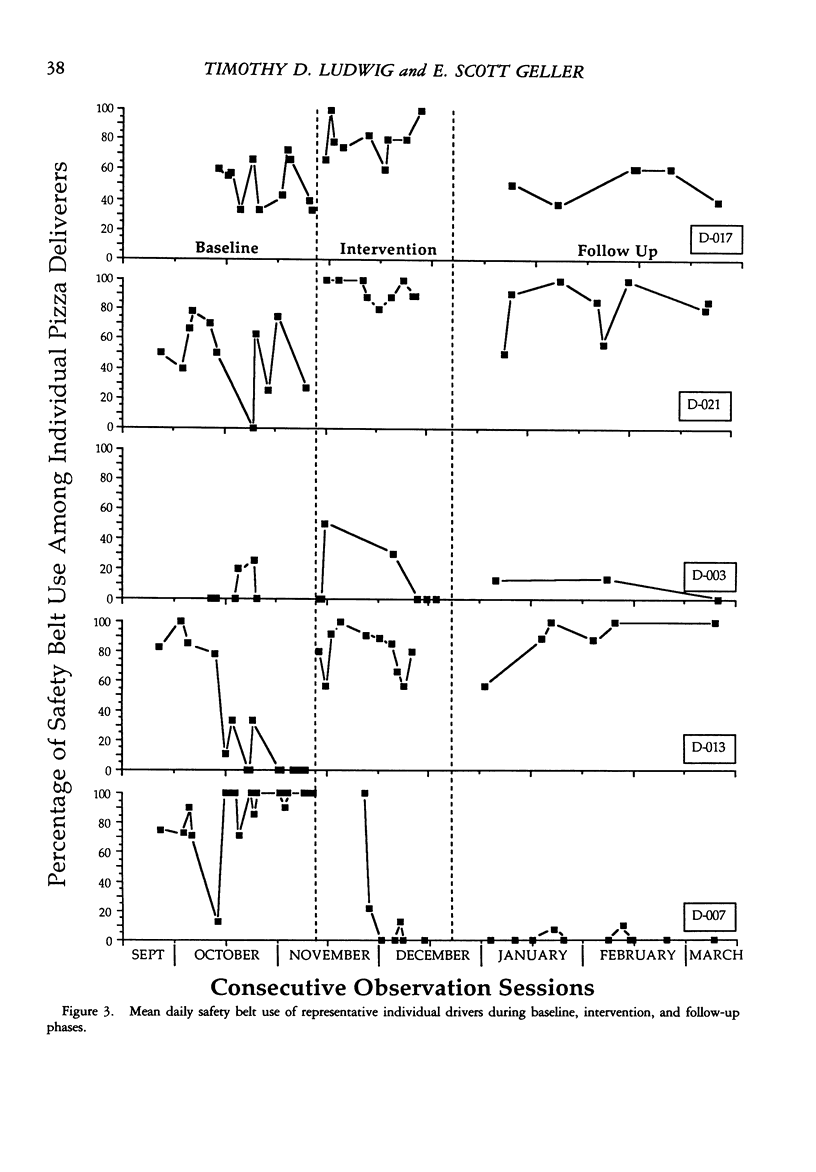
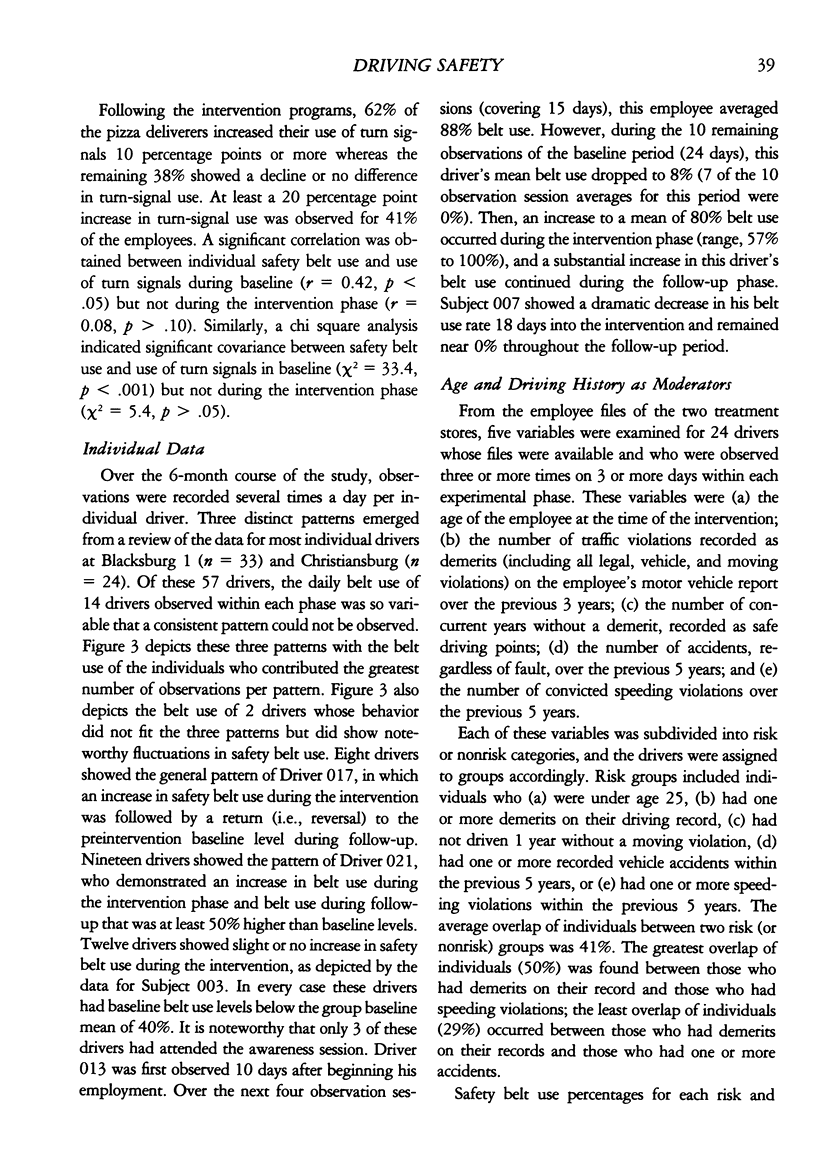
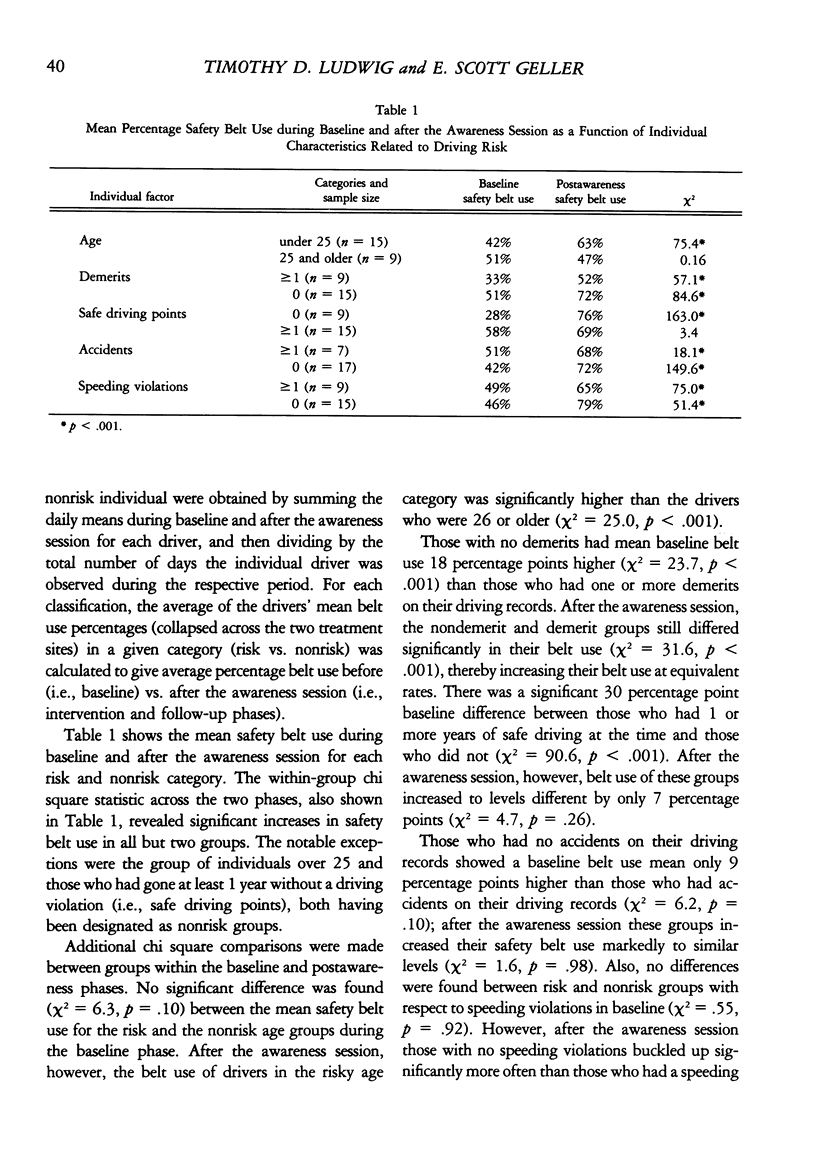

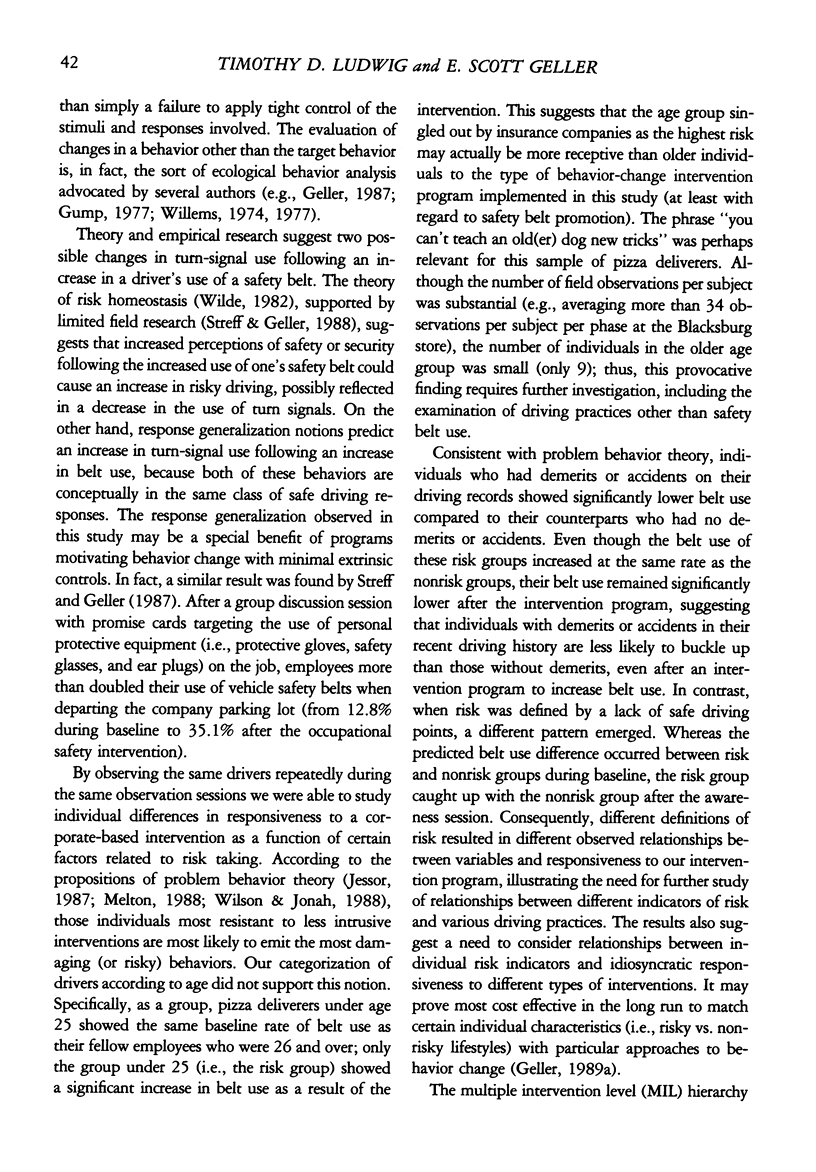
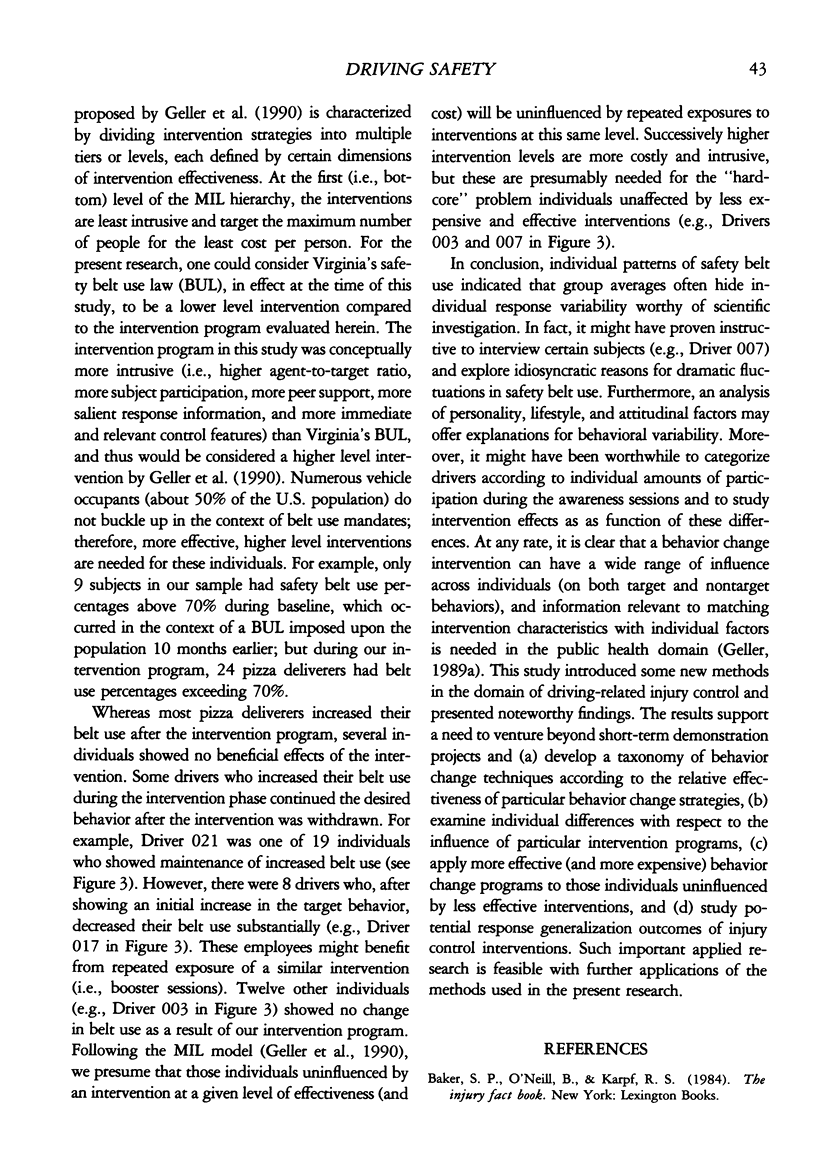

Selected References
These references are in PubMed. This may not be the complete list of references from this article.
- Cope J. G., Grossnickle W. F., Geller E. S. An evaluation of three corporate strategies for safety belt use promotion. Accid Anal Prev. 1986 Jun;18(3):243–251. doi: 10.1016/0001-4575(86)90008-4. [DOI] [PubMed] [Google Scholar]
- Geller E. S. Rewarding safety belt usage at an industrial setting: Tests of treatment generality and response maintenance. J Appl Behav Anal. 1983 Summer;16(2):189–202. doi: 10.1901/jaba.1983.16-189. [DOI] [PMC free article] [PubMed] [Google Scholar]
- Geller E. S. The buckle-up promise card: A versatile intervention for large-scale behavior change. J Appl Behav Anal. 1991 Spring;24(1):91–94. doi: 10.1901/jaba.1991.24-91. [DOI] [PMC free article] [PubMed] [Google Scholar]
- Stokes T. F., Baer D. M. An implicit technology of generalization. J Appl Behav Anal. 1977 Summer;10(2):349–367. doi: 10.1901/jaba.1977.10-349. [DOI] [PMC free article] [PubMed] [Google Scholar]
- Streff F. M., Geller E. S. An experimental test of risk compensation: between-subject versus within-subject analyses. Accid Anal Prev. 1988 Aug;20(4):277–287. doi: 10.1016/0001-4575(88)90055-3. [DOI] [PubMed] [Google Scholar]
- Willems E. P. Behavioral technology and behavioral ecology. J Appl Behav Anal. 1974 Spring;7(1):151–165. doi: 10.1901/jaba.1974.7-151. [DOI] [PMC free article] [PubMed] [Google Scholar]


